These images were taken at Red Rock Lakes National Wildlife Refuge in southwestern Montana. There were two Willets; an adult and a juvenile, on the shoreline of the lower lake that delighted me.
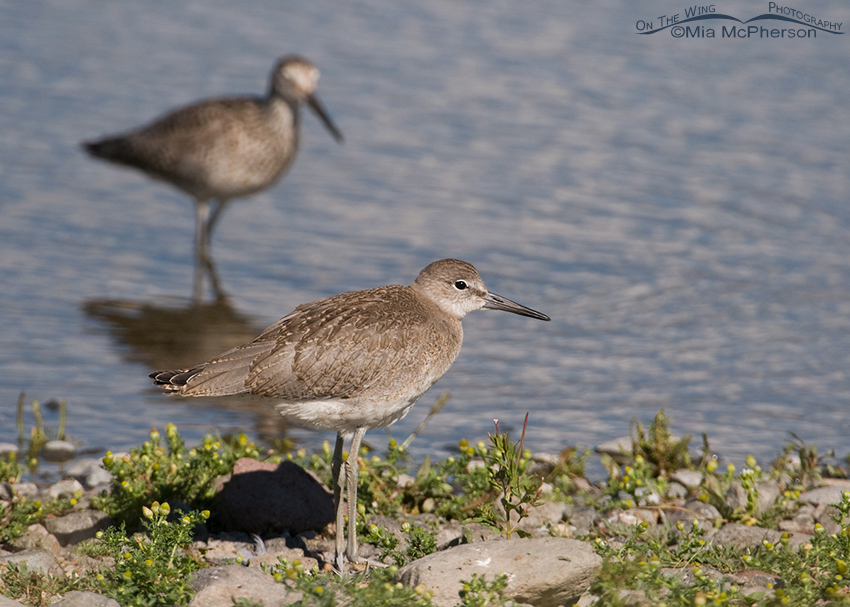 Juvenile Willet on a lake shore – Nikon D300, f6.3, 1/1250, ISO 400, Nikkor 200-400mm VR with 1.4x TC at 357mm, natural light
Juvenile Willet on a lake shore – Nikon D300, f6.3, 1/1250, ISO 400, Nikkor 200-400mm VR with 1.4x TC at 357mm, natural light
I have a fondness for shorebirds because their beauty and abundance were part of the reason why I got hooked (addicted) to bird photography while I lived in Florida and I’m glad that I still get to see and photograph them in the western U.S.
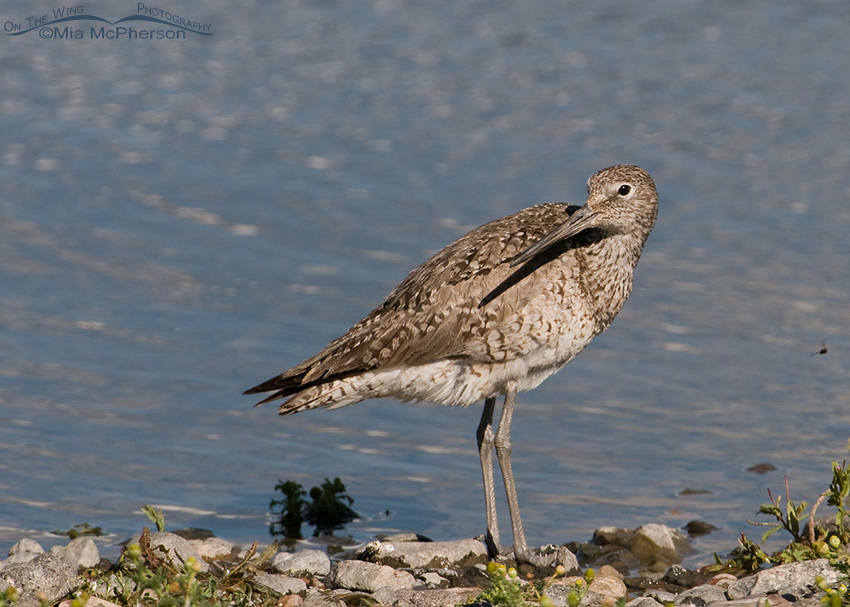 Adult Willet – Nikon D300, f7.1, 1/1250, ISO 400, Nikkor 200-400mm VR with 1.4x TC at 357mm, natural light
Adult Willet – Nikon D300, f7.1, 1/1250, ISO 400, Nikkor 200-400mm VR with 1.4x TC at 357mm, natural light
These two Willets were very relaxed, the juvenile often tucked its bill under the feathers on its back and dozed, the adult took a very long bath.
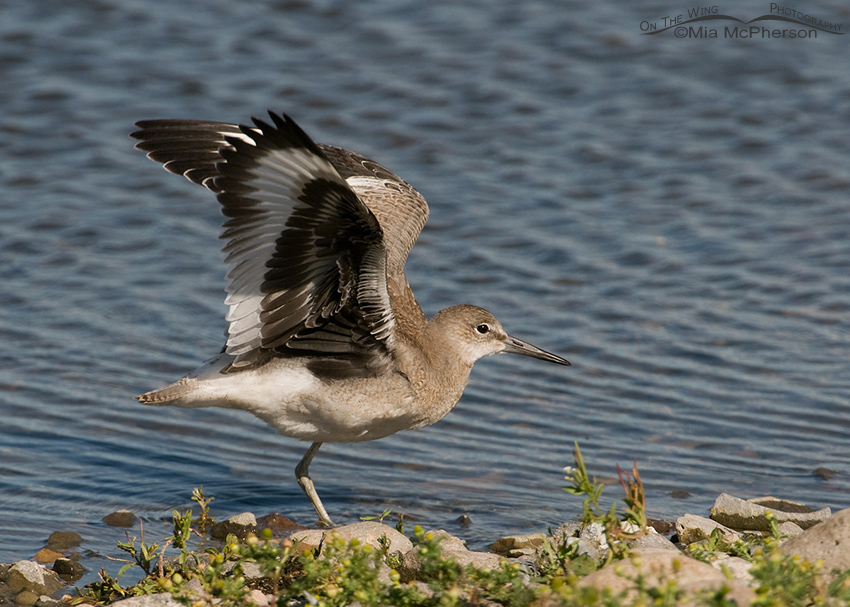 Juvenile Willet wing lift – Nikon D300, f7.1, 1/1250, ISO 400, Nikkor 200-400mm VR with 1.4x TC at 357mm, natural light
Juvenile Willet wing lift – Nikon D300, f7.1, 1/1250, ISO 400, Nikkor 200-400mm VR with 1.4x TC at 357mm, natural light
The juvenile didn’t bathe but it would fluff up and stretch now and then which showed off the striking pattern of the underside of the wings.
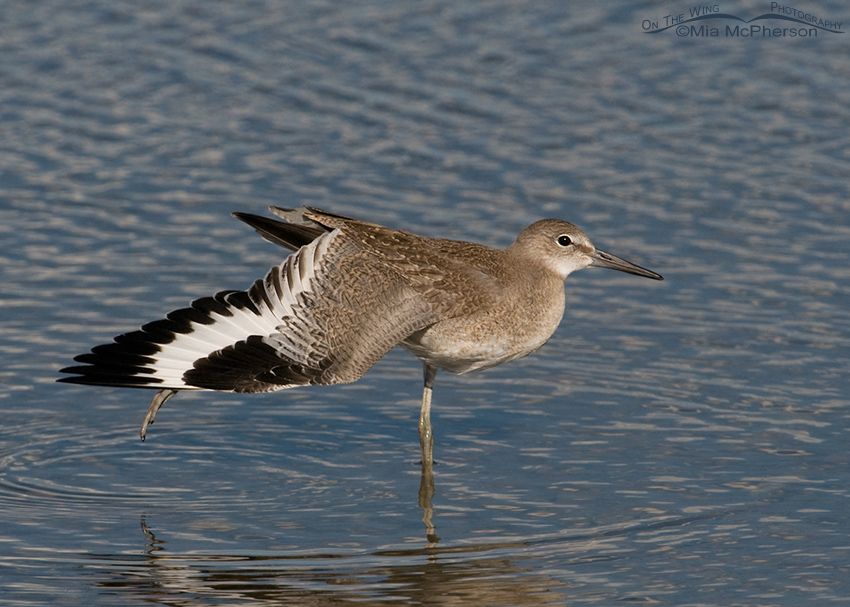 Juvenile Willet stretching a wing – Nikon D300, f7.1, 1/1600, ISO 400, -0.3 EV, Nikkor 200-400mm VR with 1.4x TC at 328mm, natural light
Juvenile Willet stretching a wing – Nikon D300, f7.1, 1/1600, ISO 400, -0.3 EV, Nikkor 200-400mm VR with 1.4x TC at 328mm, natural light
And the top of the wing too.
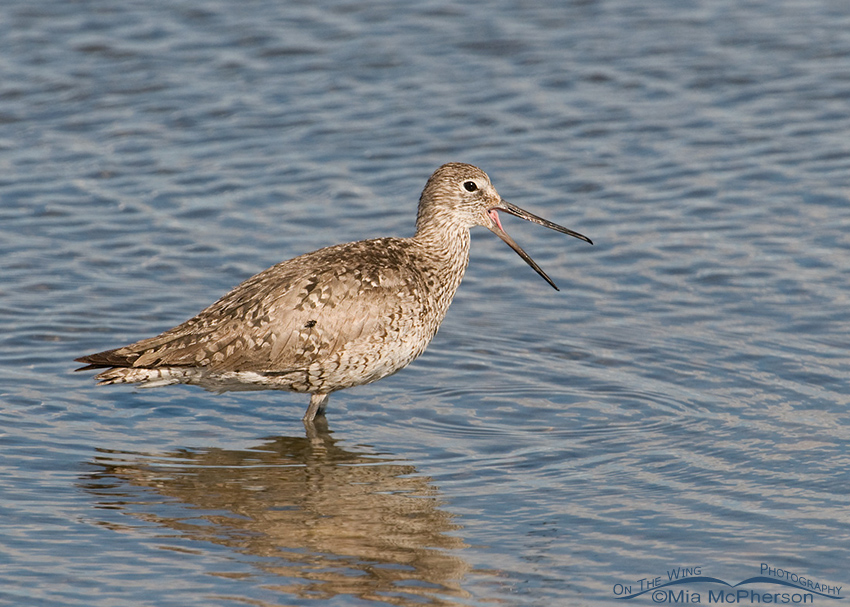 Calling adult Willet – Nikon D300, f7.1, 1/1000, ISO 400, Nikkor 200-400mm VR with 1.4x Tc at 357mm, natural light
Calling adult Willet – Nikon D300, f7.1, 1/1000, ISO 400, Nikkor 200-400mm VR with 1.4x Tc at 357mm, natural light
The adult Willet called several times while I was photographing the two birds, having seen a peregrine Falcon in the area I wondered if the adult might have spotted the falcon but it soon went back to bathing and foraging along the shoreline.
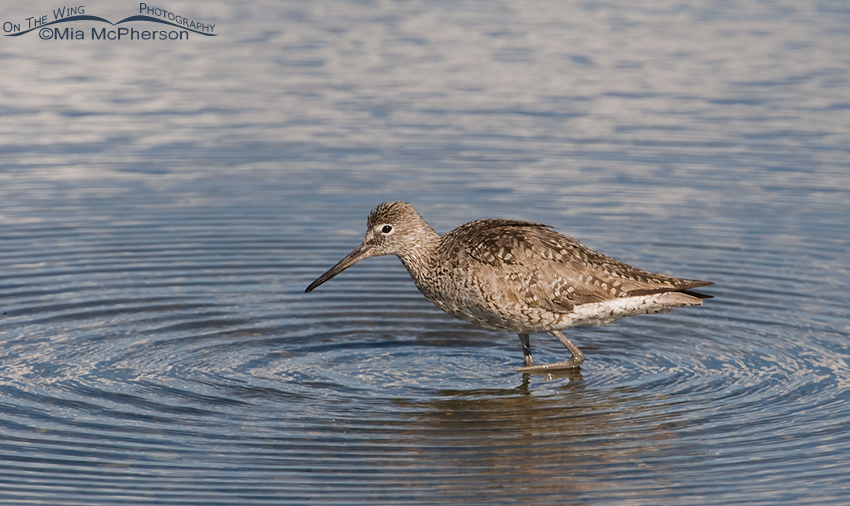 Bathing adult Willet – Nikon D300, f7.1, 1/1000, ISO 400, Nikkor 200-400mm VR with 1.4x TC at 357mm, natural light
Bathing adult Willet – Nikon D300, f7.1, 1/1000, ISO 400, Nikkor 200-400mm VR with 1.4x TC at 357mm, natural light
What can I say about this image of the adult Willet? I LOVE those ripples!
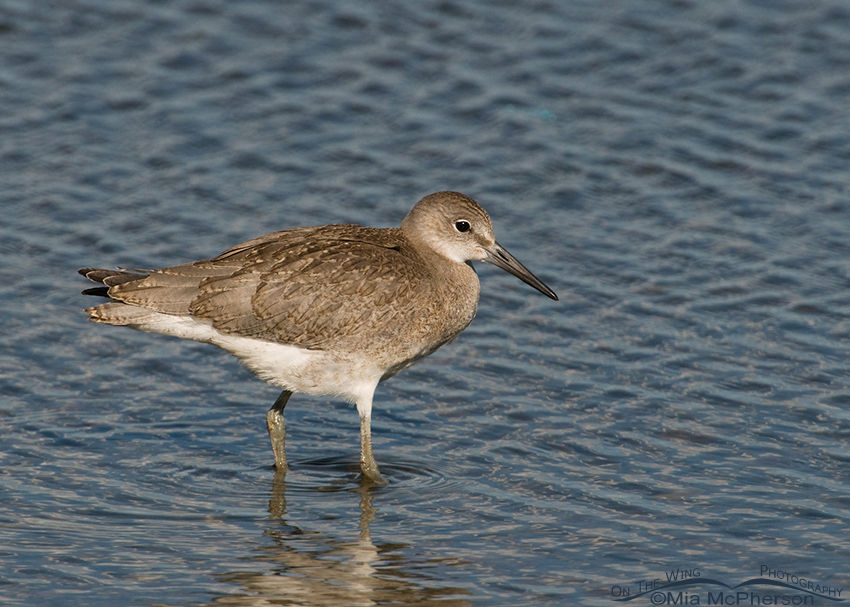 Juvenile Willet in the shallows – Nikon D300, f7.1, 1/1600, ISO 400, Nikkor 200-400mm VR with 1.4x TC at 400mm, natural light
Juvenile Willet in the shallows – Nikon D300, f7.1, 1/1600, ISO 400, Nikkor 200-400mm VR with 1.4x TC at 400mm, natural light
The juvenile Willet’s plumage was soft and beautiful. I like how well this image shows it off.
It won’t be all that long before the Willets will begin their migration south but I know that next spring they will be back again to delight me.
Life is good.
Mia
Click here to see more of my Willet photos plus facts and information about this species.


Willets were the first shorebird I learned to positively identify … walking into a local nature center and asking the docent about the black-and-white wings. They were ever-present back home in SF, and I never see them here. I miss their characteristic look — so perfectly captured here, water ripples and all.
I hope you get to see Willets again soon Ingrid, I would have missed them a lot when I moved to Utah but fortunately I see them in UT & MT often while they are here. Thanks for your kind comment.
These photos are wonderful… To achieve that clarity in the feathering of the bird makes the photos really stand out… And to have this series where you can see the movements and actions of the birds is the next best thing to being there. Many thanks.
Thank you Merrill, I appreciate your comments.
I just love the Willets, fun birds to watch. Very nice series Mia!
Thank you Dan, they are great fun to watch!
I really like their stretching of their wings. What a descriptive series. I think my Common Sandpiper was a Willet after all, but the white ring around the eye and its smaller size makes me think it might also be a Solitary Sandpiper. It’s just that they seem smaller. Thanks so much for this info. I also went ahead and posted a blog entry today about the Suncoast Seabird Sanctuary (where I shot the Willets). It deals more with the pelicans, but tomorrow I will post one about the Red Tailed and Short Winged Hawk in Rehab.
Thanks Maria. Both your posts about the Suncoast Seabird Sanctuary were very informative.
You are so right, the plummage is gorgeous. Loved that middle shot the most of the wings extended. Carol
Thank you Carol, the Willets were great fun to photograph